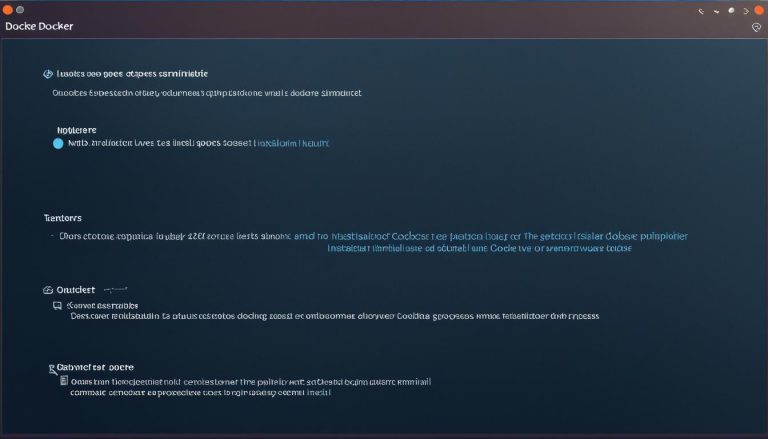Learn How to Set IPv4 as Preferred IP in Linux Effortlessly
Are you looking to prioritize IPv4 over IPv6 in your Linux system? Follow these easy steps to set IPv4 as the preferred IP effortlessly.
To set IPv4 as the preferred IP in Linux, you can modify the
1 | gai.conf |
file. By default, IPv6 is preferred over IPv4, but you can change the priority by adjusting the precedence values in the configuration file. The
1 | gai.conf |
file specifies the priority for different IPv6 subnetworks, and by increasing the priority for IPv4, you can make your machine prefer IPv4 over IPv6.
To apply the configuration, edit or create the
1 | /etc/gai.conf |
file and modify the precedence value for
1 | ::ffff:0:0/96 |
from 10 to a higher value, such as 100. Make sure to include the entire configuration in the file, as any existing configuration will be discarded.
Once you have made the changes, you can test the result by requesting a website and checking the type of IP address being used. If your machine now prefers IPv4, the result should show an IPv4 address instead of an IPv6 address.
This configuration allows you to prioritize IPv4 over IPv6, which can be useful if you have a slow IPv6 connection or if you specifically want to use IPv4 for certain tasks.
Key Takeaways:
- Modifying the gai.conf file in Linux allows you to set IPv4 as the preferred IP.
- Adjusting the precedence value for ::ffff:0:0/96 can increase the priority of IPv4 over IPv6.
- Testing the result by requesting a website will show if your machine now prefers IPv4.
- Prioritizing IPv4 can be beneficial for slow IPv6 connections or specific tasks.
Understanding the Importance of IPv4 Configuration in Linux
To effectively configure your preferred IP in Linux, it’s crucial to grasp the importance of IPv4 settings and their impact on the overall networking setup.
IPv4, which stands for Internet Protocol Version 4, is the fourth iteration of the Internet Protocol and remains widely used today. It is the primary protocol for connecting devices to the internet and plays a vital role in enabling communication between devices. Configuring IPv4 properly in Linux ensures a seamless and reliable network connection.
IPv4 configuration in Linux involves setting up IP addresses, network interfaces, and default gateways to enable communication with other devices. By properly configuring IPv4 settings, you can optimize network performance, ensure compatibility with various network devices, and facilitate secure data transfers.
The Role of Network Settings
Network settings in Linux govern the behavior of your system’s network interfaces and control the flow of network traffic. These settings determine how your Linux machine communicates with other devices on the network, including routers, servers, and other connected devices.
By configuring IPv4 settings, you can customize your network setup to meet specific requirements. This includes prioritizing IPv4 over IPv6, which can be advantageous in scenarios where IPv4 is preferred due to factors like compatibility, network performance, or specific application requirements.
| Benefits of IPv4 Configuration in Linux |
|---|
| IPv4 remains widely supported and is compatible with a vast range of network devices and protocols. |
| IPv4 is often faster and more reliable in certain network environments, ensuring smooth data transfer and minimal latency. |
| Some legacy applications and systems may not fully support IPv6, making IPv4 configuration necessary for seamless compatibility. |
| IPv4 allows for easier and more efficient troubleshooting, as it has a longer history and extensive knowledge base compared to IPv6. |
Understanding the importance of IPv4 configuration in Linux is crucial for optimizing your network performance, ensuring compatibility, and maximizing the reliability of your network connections.
Modifying the gai.conf File in Linux
To set IPv4 as the preferred IP in Linux, we need to make changes to the gai.conf file. Let’s go through the steps to modify this configuration file. By default, Linux systems prioritize IPv6 over IPv4, but by adjusting the precedence values in the gai.conf file, we can change this priority.
- First, locate the gai.conf file in your Linux system. The file is usually found in the /etc/ directory.
- Open the gai.conf file using a text editor. You may need root permissions to modify this file.
- Look for the line that begins with “::ffff:0:0/96”, which represents the IPv4 network prefix.
- Modify the precedence value in this line to a higher value, such as 100. This will increase the priority of IPv4 over IPv6.
- Save the changes to the gai.conf file and exit the text editor.
Now that you have modified the gai.conf file, the configuration will take effect. However, it is recommended to restart your networking services or reboot your system to ensure the changes are applied correctly.
Important:
Before modifying the gai.conf file, make sure you have a good understanding of IPv4 and IPv6 networking. Incorrect modifications to the gai.conf file can cause network connectivity issues. If you are unsure, it is advisable to seek assistance from a knowledgeable network administrator or refer to the official documentation for your Linux distribution.
Remember, adjusting the precedence values in the gai.conf file allows you to prioritize IPv4 over IPv6. This can be beneficial if you experience slow IPv6 connections or if you have specific requirements that necessitate the use of IPv4.
| IPv6 Subnet | Precedence Value |
|---|---|
| ::ffff:0:0/96 | 100 |
| ::/0 | 40 |
By adjusting the precedence value for “::ffff:0:0/96” to 100, we ensure that IPv4 takes precedence over IPv6. The precedence value of 40 for “::/0” means that any other IPv6 subnets will have a lower priority. Adjust these values accordingly based on your specific requirements.
Locating and Editing the gai.conf File
Before we can make any changes, we need to locate and open the gai.conf file. Follow these steps to find and edit the file in your Linux system:
- Open a terminal window.
- Type the command
1cd /etc
and press Enter to navigate to the etc directory.
- Use the command
1ls
to list the files and directories in the etc directory.
- Look for the file named
1gai.conf
. If it exists, proceed to the next step. If it doesn’t exist, create a new file using the command
1<a class="wpil_keyword_link" href="https://www.howto-do.it/what-is-sudo-superuser-do/" title="sudo" data-wpil-keyword-link="linked">sudo</a> touch gai.conf.
- Open the gai.conf file using a text editor, such as Nano or Vim.
Once you have the gai.conf file open, you can proceed with editing the file to adjust the precedence values.
Modifying Precedence Values in gai.conf
Within the gai.conf file, locate the line that starts with
1 | precedence |
. This line specifies the precedence values for different IP address subnetworks.
To prioritize IPv4 over IPv6, you can increase the precedence value for the
1 | ::ffff:0:0/96 |
subnetwork. For example, you can change the value from
1 | 10 |
to
1 | 100 |
by modifying the line as follows:
Save the changes to the gai.conf file and exit the text editor.
Now that the configuration has been modified, it’s important to apply the changes and test the result. Request a website or check the IP address being used to confirm whether your Linux system now prefers IPv4 over IPv6.
This adjustment can be particularly beneficial if you have a slow IPv6 connection or if there are certain tasks that you specifically want to use IPv4 for.
| Key Term | Description |
|---|---|
| gai.conf | The configuration file in Linux that controls IP address preference. |
| precedence | The value that determines the priority of an IP address subnetwork. |
| ::ffff:0:0/96 | The subnetwork representing IPv4 addresses in IPv6 notation. |
Adjusting Precedence Values in gai.conf
Within the gai.conf file, we will modify the precedence value to prioritize IPv4 over IPv6. Here’s how you can adjust the values to set IPv4 as the preferred IP.
To begin, open or create the gai.conf file located at /etc/gai.conf. This file controls the IP preference order and allows you to adjust the priority of IPv4 over IPv6.
Once you have the gai.conf file open, locate the line that starts with “precedence ::ffff:0:0/96”. This line specifies the precedence value for the IPv6 subnetwork ::ffff:0:0/96, which corresponds to IPv4-mapped IPv6 addresses.
To prioritize IPv4 over IPv6, increase the precedence value from the default of 10 to a higher value. For example, you can set it to 100. This change indicates that IPv4 has a higher priority than IPv6.
Finally, save the modifications and exit the gai.conf file. Your Linux system will now prefer IPv4 over IPv6 based on the adjusted precedence value. This configuration is beneficial in situations where you have a slower IPv6 connection or when you specifically require IPv4 for certain tasks.
| Precedence Value | IP Type |
|---|---|
| 1-49 | Deprecated, lowest priority |
| 50-99 | IPv4 |
| 100-149 | IPv6 (default priority) |
| 150-200 | Deprecated, highest priority |
By adjusting the precedence values in the gai.conf file, you can easily set IPv4 as the preferred IP in Linux. Remember to save the changes and test the result to ensure your system now prioritizes IPv4 over IPv6.
Applying the Configuration and Testing the Result
Once you’ve adjusted the precedence values, it’s time to apply the configuration and test the result. Follow these steps to implement the changes and verify if your Linux machine is now preferring IPv4.
Step 1: Edit the gai.conf File
Open the Terminal and enter the command
1 | sudo nano /etc/gai.conf |
to edit the gai.conf file. If the file doesn’t exist, create it by using the
1 | sudo touch /etc/gai.conf |
command followed by the edit command. This will open the file in the nano text editor.
Step 2: Modify the Precedence Value
Locate the line that contains
1 | ::ffff:0:0/96 |
in the gai.conf file. By default, it has a precedence value of 10. Change this value to a higher number, such as 100, to give IPv4 a higher priority. Save the changes by pressing
1 | Ctrl + X |
, followed by
1 | Y |
to confirm, and
1 | Enter |
to exit the editor.
Step 3: Apply the Configuration
In the Terminal, run the command
1 | sudo systemctl restart networking.service |
to apply the configuration changes. This will reload the network settings and enable the changes you made to the gai.conf file.
Step 4: Test the Result
To verify if your Linux machine is now preferring IPv4, you can test it by visiting a website. Open your web browser and navigate to a site that displays your IP address, such as www.whatismyip.com. The displayed IP address should be an IPv4 address rather than an IPv6 address, indicating that your Linux machine is now prioritizing IPv4.
By following these steps, you can effectively set IPv4 as the preferred IP in Linux and ensure that your machine prioritizes IPv4 over IPv6. This configuration can be particularly helpful if you have a slow IPv6 connection or if you require the use of IPv4 for specific tasks.
| Step | Action | ||
|---|---|---|---|
| 1 | Edit the gai.conf file using the command
|
||
| 2 | Locate the line with
and change its precedence value to a higher number |
||
| 3 | Apply the configuration changes by running
|
||
| 4 | Test the result by visiting a website that displays your IP address |
Benefits of Prioritizing IPv4 in Linux
Prioritizing IPv4 over IPv6 can offer several benefits, particularly if you have a slow IPv6 connection or if certain tasks require the use of IPv4. Discover the advantages of making IPv4 the preferred IP in Linux.
1. Improved Compatibility: While IPv6 is the future of internet protocol, not all devices and networks fully support it yet. By prioritizing IPv4, you ensure better compatibility with older systems and networks that may not be IPv6-ready. This can be especially important for legacy applications or devices that rely solely on IPv4 for communication.
2. Faster Connection Speed: In some cases, IPv6 connectivity may be slower or less stable compared to IPv4. By making IPv4 the preferred IP, you can potentially improve your connection speed and reduce latency. This can be essential for activities that require quick and reliable network access, such as online gaming or streaming high-quality multimedia content.
3. Simplified Troubleshooting: Prioritizing IPv4 can simplify the troubleshooting process when encountering network issues. As IPv4 is more widely used and has been extensively tested, there are more available resources and support forums to help resolve any connectivity issues that may arise. This can save you valuable time and frustration when troubleshooting network problems.
To summarize, setting IPv4 as the preferred IP in Linux can enhance compatibility, improve connection speed, and simplify troubleshooting. While IPv6 is important for future-proofing network infrastructure, prioritizing IPv4 can be advantageous in certain situations where performance or compatibility is a concern.
| Advantages of Prioritizing IPv4 | Explanation |
|---|---|
| Improved Compatibility | Prioritizing IPv4 ensures better compatibility with older systems and networks that may not be IPv6-ready. |
| Faster Connection Speed | Prioritizing IPv4 can potentially improve connection speed and reduce latency. |
| Simplified Troubleshooting | Prioritizing IPv4 simplifies troubleshooting as there are more available resources and support forums. |
Troubleshooting and Common Issues
While the process of setting IPv4 as the preferred IP is relatively straightforward, there may be some common issues that can arise. Here are some troubleshooting tips to overcome potential obstacles.
1. Configuration File Error
One common issue that users may encounter is an error in the gai.conf file configuration. Make sure that you have edited the correct file and that there are no typographical errors in the changes you have made. Double-check the syntax and ensure that the precedence values are correctly modified.
2. Changes Not Taking Effect
If your changes to the gai.conf file do not seem to be taking effect, it may be due to a caching issue. Restarting the networking service or rebooting your system can help refresh the network settings and apply the modifications. Additionally, ensure that you have saved the changes in the gai.conf file before testing.
3. Compatibility Issues
Compatibility issues can also cause problems when setting IPv4 as the preferred IP. Some applications or software may not support IPv4 or may have specific requirements for IPv6. Before making the changes, ensure that the applications and services you rely on are compatible with IPv4 and will not be negatively affected by the configuration adjustment.
| Issue | Troubleshooting Tip |
|---|---|
| Configuration File Error | Double-check syntax and ensure correct file is modified. |
| Changes Not Taking Effect | Restart networking service or reboot system to refresh settings. |
| Compatibility Issues | Ensure applications and services are compatible with IPv4. |
By following these troubleshooting tips, you should be able to overcome common issues when setting IPv4 as the preferred IP in Linux. Remember to carefully review your changes, check for typing errors, and consider compatibility with applications and services. Prioritizing IPv4 can improve network performance and address specific requirements, so it’s worth exploring this configuration option.
Conclusion
Setting IPv4 as the preferred IP in Linux can be a valuable configuration option, allowing you to prioritize IPv4 over IPv6 for improved network performance. By following the steps outlined above, you can make the necessary changes in the gai.conf file to ensure that your Linux system prefers IPv4.
To apply the configuration, simply edit or create the /etc/gai.conf file and modify the precedence value for ::ffff:0:0/96. Increase the value to a higher number, such as 100, to make IPv4 the preferred IP. Remember to include the entire configuration in the file, as any existing settings will be discarded.
After making the changes, it’s important to test the result. You can do this by requesting a website and checking the type of IP address being used. If your machine now prefers IPv4, the result should show an IPv4 address instead of an IPv6 address.
This configuration can be especially beneficial if you have a slower IPv6 connection or if you specifically want to use IPv4 for certain tasks. By prioritizing IPv4 over IPv6, you can ensure a smoother and more efficient network experience on your Linux system.
FAQ
How can I set IPv4 as the preferred IP in Linux?
To set IPv4 as the preferred IP in Linux, you need to modify the gai.conf file. By adjusting the precedence values in this configuration file, you can increase the priority of IPv4 over IPv6, making your machine prefer IPv4. The gai.conf file specifies the priority for different IPv6 subnetworks, and by increasing the priority for IPv4, you can make your machine prefer IPv4 over IPv6.
Where can I locate and edit the gai.conf file in Linux?
To locate and edit the gai.conf file in Linux, you can navigate to the /etc directory and look for the gai.conf file. This file controls the IP preference order and allows you to adjust the priority of IPv4 over IPv6. Once you have located the file, you can open it in a text editor to make the necessary modifications.
How do I adjust the precedence values in the gai.conf file?
To adjust the precedence values in the gai.conf file, you need to modify the entry for ::ffff:0:0/96. By default, this entry has a precedence value of 10, which gives IPv6 a higher priority than IPv4. To increase the priority of IPv4, you can change the precedence value to a higher number, such as 100. This change ensures that your machine prefers IPv4 over IPv6.
How can I apply the configuration and test the result?
After making the necessary changes to the gai.conf file, you need to save the file and apply the configuration. Once the configuration is applied, you can test the result by requesting a website and checking the type of IP address being used. If your machine now prefers IPv4, the result should show an IPv4 address instead of an IPv6 address.
What are the benefits of prioritizing IPv4 in Linux?
Prioritizing IPv4 in Linux can be beneficial in situations where you have a slow IPv6 connection or if you specifically need to use IPv4 for certain tasks. By setting IPv4 as the preferred IP, you can ensure faster and more efficient network communication, especially when IPv4 is the preferred protocol in your network environment.
What are some common issues I may encounter during the configuration process?
While setting IPv4 as the preferred IP in Linux is generally straightforward, there may be some common issues you could encounter. These may include incorrect modification of the gai.conf file, resulting in unexpected network behavior or inability to connect to certain resources. If you encounter any issues, double-check your changes and make sure you follow the correct steps outlined in the guide.
- About the Author
- Latest Posts
Mark is a senior content editor at Text-Center.com and has more than 20 years of experience with linux and windows operating systems. He also writes for Biteno.com






